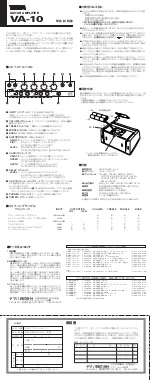
14
How to Operate in Four or Three Channel Mode
How to Operate Four Channel Mode
How to Operate Three Channel Mode
In the Four Channel Mode, all channels operate as inde-
pendent 50 watt amplifiers. A typical four channel applica-
tion is to drive a pair of full range loudspeakers in the front
section of a vehicle and a second pair in the rear. Refer to
figures 7 and 8.
Power
The MCC204 will turn On or Off when the Control Center
turns On or Off.
Note: There must be an Amp ON connection between the
MCC204 and the signal source unit in order for the
amplifier power turn On and Off to function.
Input Source
Set the Input SOURCE Switch to the 3, 4 position for 4
Channel Mode.
Sensitivity Controls
The Sensitivity Controls allow setting of the input level of
all four amplifier channels to provide an ideal match for the
signal source being used.
Mode
Set both MODE Switches to the STereo position to config-
ure the amplifier for four channel operation.
Crossover
Set the CROSSOVER Switches to the OUT position since
all channels are operating at full frequency range.
In the Three Channel, Tri-amp Mode, channel 1 operates as
a 50 watt amplifier for the tweeter, channel 2 operates as a
50 watt amplifier for the mid-range and bridged channels 3
and 4 operate as a 200 watt amplifier driving a woofer. Re-
fer to figures 7 and 8.
Power
The MCC204 will turn On or Off when the control center
turns On or Off.
Note: There must be an Amp ON connection between the
MCC204 and the signal source in order for the
amplifier turn On and Off to function.
Input Source
Set the Input SOURCE Switch to 3, 4.
Sensitivity Controls
The Sensitivity Controls allow setting the input level of
amplifier channels 1, 2 and 3 to provide an ideal match for
the signal source being used. Sensitivity Control 3 adjusts
the woofer level balance and Sensitivity Control 4 has no
effect.
Mode
Set the Channels 1-2 MODE Switch to the STereo position.
Set the Channels 3-4 output MODE Switch to the BRidged
position.
Crossover
Set the CROSSOVER Switches to the OUT position since
all channels are operating at full frequency range.
Figure 7
Figure 8





































